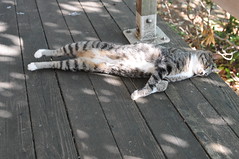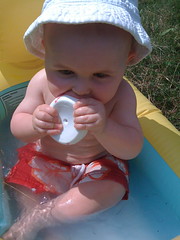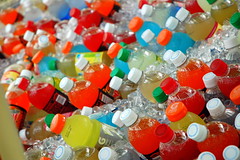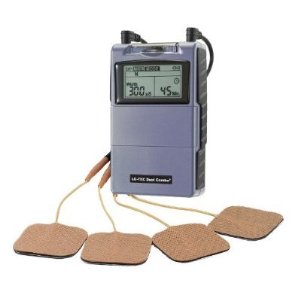Whether you are a professional athlete, a weekend warrior, or someone who loves working out, you will benefit from having a good grasp on how to recover properly.
Good recovery will enhance performance, allow you to train harder and ensure that you get better gains from your training. It helps the muscles repair, adapt and build and is essential in any training routine.
Of course, not all sports recovery methods are necessary for everyone, but as we well know knowledge is power.
Here I am going to review the top methods for recovery, talk about why you need them, and what cases you should apply each one. The best evidence is trying it yourself. If you feel better, then it is a good recovery method for you.
There are two ways you can and need to recover.
- Immediate Recovery
- Ongoing Recovery
The methods that I will talk about today will be a variety of both, and we’ll discuss when to use each one effectively.
Why Do We Need To Recover?
A good recovery routine will get us back to our optimal working state. The faster you get back to where you should be, the harder and more effectively you can train, and the more gains you will likely achieve. Recovery will not only get you back to your original state, but it will also help the body to super-compensate, adapt to the training you are doing, and get the gains you were working for. No recovering properly also puts you at a greater risk of injury. There is no doubt that neuromuscular fatigue has a large affect on our movement patterns. When you have deficiencies you will be placing an increased demand on certain muscles and tissues within the body. Recruitment patterns get messed up, and you increase your risk of further fatigue and injury. Recovery can be immediate and ongoing, and it is important to take a good look at your specific needs, the regeneration process, much like the conditioning process, is definitely an individual one.
Fatigue Explained
You can put fatigue into four basic categories, all of which need addressing during the recovery process, and all of which will affect performance in certain individuals.
- Metabolic Factors: Insufficient energy.
- Neural Factors: Nervous system fatigue.
- Environmental Factors: Travel, weather.
- Psychological Factors: Emotional/ stress
Effective Recovery Methods
Here are some of the most effective methods of recovery. They are not all scientifically well backed, but all show positive results in a lot of athletes, and simply need further research. I certainly have used them all to some degree of success.
Cool Down
First and foremost, don’t neglect the cool down phase. Any exercise where there are hard intervals involved you really do need to include a full cool down. Weights sessions don’t need the whole gig, much less or no active recovery and a lot more mobility work to ensure you relax the muscles and decrease adrenaline, but the cool down certainly is an important part of any session.
This can involve two parts for intense exercise:
- Walking around, lightly jogging, and keeping on moving directly after a game or tough session will ensure that you prevent blood pooling (blood pooling in the legs), helps to slowly reduce adrenaline levels, and reduce muscle stiffness (not yet scientifically proven, but positive results). Keep moving for at least 5 minutes, longer if your session or game was very hard, and be sure to perform some active stretches and light mobility exercises along the way.
- Static stretching is massively opposed in a lot of circles, and there is not much evidence backing it as a recovery method, however what we do know is it feels good and it certainly releases a relaxing effect, which can only help to stimulate growth hormones, necessary for recovery and adaptation. Although scientifically it is not proven for performance enhancement, and should actually be avoided pre exercise, it has been shown to decrease the injury rate and aid recovery somewhat. However, the more active recovery that you participate in directly after exercise, the longer you take, and the more range of motion work you do, the less static stretching you will need. In fact, it should then be individualized, and concentrated in areas of decreased mobility or extra tight spots in certain people. I am all for static stretching POST tough session and weights session, combined with active stretching and some massage modalities and always do it. Especially for problem areas such as hip flexor and pectoral muscles.

static stretch?
Contrast Methods
Alternating between hot and cold is becoming a very popular way to recover. Physiological methods are still being discussed, whether it is the constriction of the veins helping remove ‘crap’ from the muscles, simply a decrease in sensation allowing you to perform a more active recovery without pain, relaxes the muscle and decreases neural activity, or whether it is all three combined… what is sure is that contrast baths or showers to enhance and speed up recovery, at least as much as an active cool-down. The best evidence, try it yourself. You feel better, then its a goer.
Play around with the time, however here are some good guidelines to start with:
- Shower Contrast Therapy- 30 seconds cold as you can stand, 30 seconds hot. Repeat at least 3 times. Extra soreness in special area, localize the shower head there is possible.
- Spa/ Ice bath Contrast Therapy- 4 minutes in the spa, 1 minute in the ice bath or plunge pool.
If you need greater relaxation in the shower, just up the warm water time.
The exception here is with an inflammation injury you might want to stay away from the heat, just do an ice bath. Heat isn’t great for an injury in the early stages and may only inflame it some more.
Hydrotherapy
Hydrotherapy covers a really big blanket of recovery therapies, all of which really do help to reduce soreness, or simply leave you feeling much better. Again, as I seem to keep repeating myself, the scientific back up here is a bit sketchy. It is a little unsure as to why the benefits occur, may it be from water temperature, hydrostatic pressure (like a compression force on the body that causes fluid movement in your body), simply the ability to do low impact mobility work or who knows why…the fact is that it works, heaps of people get great results, myself included, so I am going to simply tell you what to do. Try it out yourself and see the benefits.

it’s fun too!!
In The Pool: You can do a pool session as a recovery session when you are feeling a bit down and in need of some energy. It is also a great active recovery method, that we will talk about later. Get in the pool, for 30-45 minutes you are basically moving around. Try to do a routine something like this, you only need half the length of a lane for most of it, repeat everything 3 times
- Walking
- Side steps
- Lunges
- Side lunges
- High kicks (obviously slow in the water!)
- High knees & Butt Flick
- Do a few laps of an easy stroke
- Some static stretching in the water
You can always make it tougher by adding in some water running, or some more actually swimming, but either way, this will leave you feeling refreshed.
In The Ocean: The sea is a great place to do some recovery. It’s cold and it’s salty. Perfect! Same deal, get in, walk around, swim out, come back in the shallows and do some active mobility work and you are done. An instant pick me up for anyone who has not tried it.
Salt Baths: Epsom salt baths are a very popular way to recover. The proposed mechanism is the uptake of magnesium by your skin. This is a rally important mineral that helps with muscle relaxation.
Nutrition
One of the most important aspect of recovery, if not the most. You gotta get your nutrition right after exercise or a game to ensure that you replenish what you lost, and get the gain that you need. When we are looking at nutritional recovery, we are looking at a few factors.
- Refueling the muscle and liver glycogen stores
- Replacing fluid loss and electrolyte loss
- Building new muscles proteins
Refuel
During high intensity exercise, muscle glycogen is what we use first, and it is what we need to replenish first. Immediately after exercise some carbohydrates should be taken in. Ensure that you get some protein in, as amino acids are essential to building muscle (protein powders are good, but there are a lot of natural sources of protein out there) Try to get at least 50 grams of carbohydrates in if the exercise was high intensity. After a high intensity day, or game, ensure that you keep replenishing your carbohydrate stores… for the majority of you, you won’t need to concentrate so much on this, immediate post workout nutrition is the key).
For just weights sessions, it is recommended that you take in protein plus carbohydrate (with a high GI) within 30 minutes of finishing your session. There is a window where your body will use it more effectively. If you aren’t a fan of protein powder, a milk plus a banana is a great option, can of tuna on some crackers… you get the picture. Eat something high in protein and with some carbohydrates (helps the uptake of the protein to the muscle) directly after the session.
Rehydrate
You pretty much always end up in a fluid deficit after any type of training, and it is regularly ignored. Bad idea. Fluid deficits can affect performance in later training’s and hinder recovery. try to get in well over 100% of your fluid loss in the hours after your training. Ensure, especially in the case of heavy aerobic exercise r intense exercise that you get some electrolyte replacement as well. Gatorade is good for this. Totally not necessary for the average gym goer doing 30 minutes on the treadmill, in fact will probably interfere with weight loss goals… too much energy.

drink up…
![]() photo credit: Steve Snodgrass
photo credit: Steve Snodgrass
Real Food or Supplements for Recovery?
You don’t necessarily need to have supplements to reach your goals, especially if you are not a highly trained athlete. Start by getting real food into your body, and ensure that you don’t double up. That will only lead to weight gain, and you probably don’t need it. Ideally if you can get real food in, do that… but protein powder provides an easy option to ensure that you get what you need directly after you training or game. It is simply too convenient to ignore.
Soft Tissue Methods
- Myofascial release: We have spoken a lot about this in tennis ball therapy and fascia pain. Check out those two articles for more information. I won’t go into more information right now, you have thorough guides there. It is essential to recovery and you will instantly get better mobility, so just do it. Foam rollers are super cheap, and massage balls even cheaper. Read the articles and find out more for yourself, you will feel a difference and this is one that any type of athlete or regular exerciser should do.
- Massage: Getting a massage can have two effects on the body. Mechanical or reflexive. Mechanical is the result of stretching the muscle tissues, stroked, kneading, pressing.. which leads to better circulation, stretching of soft tissue, breaking down scar tissue, and improving tissue permeability. Reflex occurs when the actions of the massage can result in a change in function. Massage is a really great way to speed up recovery, and simply does help. Whether you can get it done professional, do some self massage on your own, or get a partner to help, you will feel both psychological and physiological benefits that will enhance your recovery.
Muscle Stimulation
The use of electromyostimulation, or EMS, which is the little machine that send electric pulses into the muscle is a form of recovery used widely. Not as necessary as some, it does give you that extra bit of recovery. It can act like a massage in that it stimulates the blood flow and creates a pumping effect. Electronic muscle stimulators can help to induce a relaxation state and also breakdown adhesion’s that may exist between muscle fibers. You have to own a machine for it, and they are pretty expensive, but if you are interested, you can see a wide range of cheaper EMS machines here at amazon. The one in the pic is just $99.
Active Rest
Rest doesn’t always have to be total rest. Although there are going to be occasions where that is essential, you also need to keep in mind that sometimes moving is better than not. Active recovery can comprise of two different things. You can either do the same activity you were doing, at a much lower intensity. Take the body through the motions, either lower the weight, the speed or the duration. It ensures that you keep the body moving, your muscles active, the correct movement patterns activated, but you also get a bit of active rest. If you were going to do a leg workout, you still can, just do it lighter. Body weight exercises are a good alternative. Do some light bum exercises to ensure that you activate your glutes, and some push ups instead of a heavy exercise like bench press.
On the other hand, active rest can be something completely different, and this has the psychological benefit added in as well. As we mentioned above a pool session is a great form of active recovery. Walking is very underrated, and a long walk can enhance your recovery immensely. If you are in a team sport, maybe try playing another sport if your players are down, it helps to give the body a break from the usual movements, but also keeps the blood flowing at a lower intensity.
Sleep

whatever you can get?
Extremely important that most of us mess up. This is the time when your growth hormones are released, and you get the best chance at recovering. You need to get into a good sleeping routine in order to recover properly, and if you don’t have one, make it a priority. Here are some tips to a better nights sleep.
- Avoid caffeine after 2pm, caffeine is thought to have a 9 hour life span, so just don’t drink it after 2pm, even if you are adapted to it and you don’t think if affects you much, try to abstain and see how you sleep.
- Try some relaxation techniques once you get into bed, clenching your major muscle groups and relaxing them is a great way to start to relax all your muscles.
- Sleep in total darkness, you will be amazed how much light can affect your sleep.
- Get rid of anything electronic prior to sleeping.
- Take a good book to bed, it helps you relax.
- Avoid alcohol prior to bedtime.
- Create a pattern and try to get up at the same time everyday.
Do You Need All These Sports Recovery Methods?
Nope, definitely not. Especially if you aren’t training everyday. However, the fact is that we will all get sore and tired from time to time. Having a regular recovery routine will ensure that we get back to our normal state and increase the gains we can achieve. This is really important for any type of athlete. Try out a few of the methods, do some consistently, and add a few more in when you feel especially in need of a pick me up.
Enjoy!


Mike says
Excellent post covering ALL points, Lauren. Well done!
rich simpson says
I am a 48 yr old tennis player who plays 4 to 5 days a week. i bought a foam roller and recommend it to athletes of all ages. it will help your recovery.